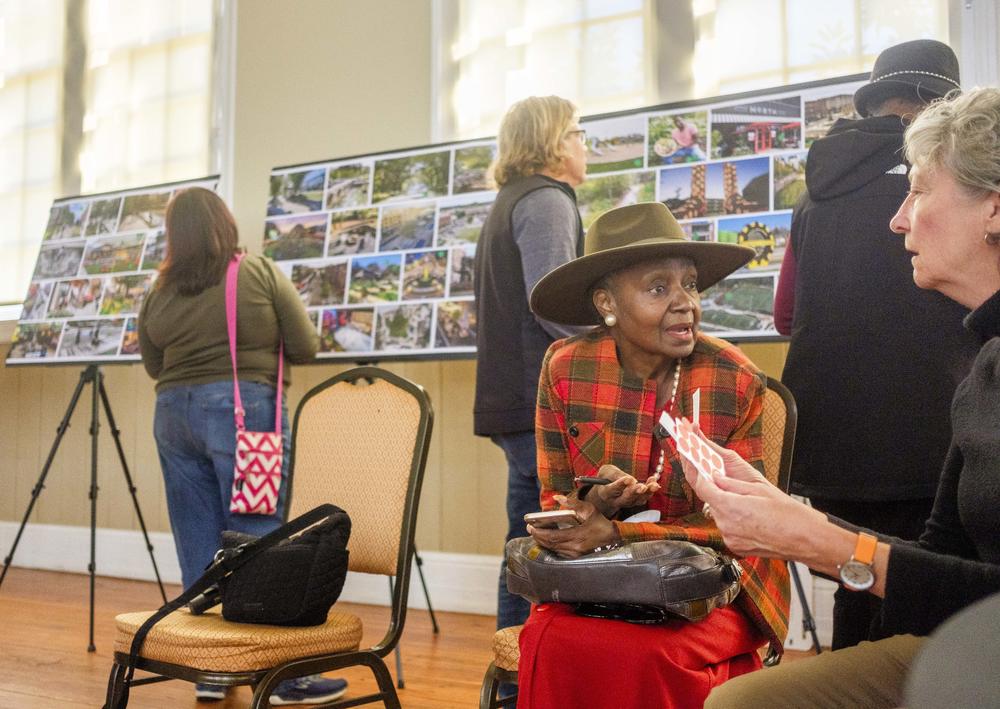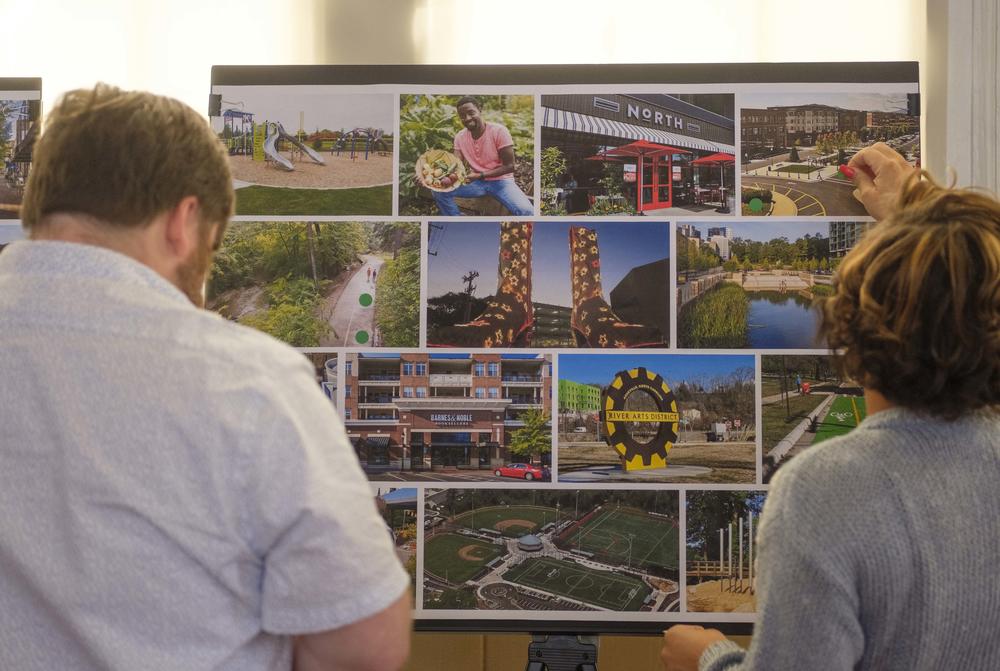
Caption
Angel Irving, second from right, talks with Atlanta landscape architect and planner Lauren Standish, right, during a community meeting Thursday about the proposed East Bank redevelopment project at the old Bibb Mill site. Irving said as the project goes forward, she wants assurances that on site jobs are open to local workers.
Credit: Grant Blankenship/GPB News



